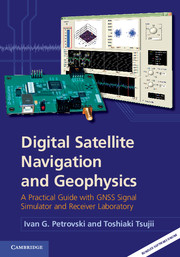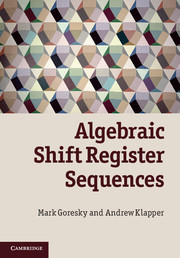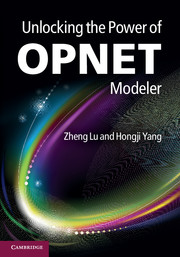Refine search
Actions for selected content:
6791 results in Communications and signal processing
6 - The Laplace and z-transforms
-
- Book:
- Introduction to Orthogonal Transforms
- Published online:
- 05 October 2012
- Print publication:
- 08 March 2012, pp 277-338
-
- Chapter
- Export citation
9 - Karhunen-Loève transform and principal component analysis
-
- Book:
- Introduction to Orthogonal Transforms
- Published online:
- 05 October 2012
- Print publication:
- 08 March 2012, pp 412-460
-
- Chapter
- Export citation
Acknowledgments
-
- Book:
- Introduction to Orthogonal Transforms
- Published online:
- 05 October 2012
- Print publication:
- 08 March 2012, pp xx-xx
-
- Chapter
- Export citation
7 - Fourier-related orthogonal transforms
-
- Book:
- Introduction to Orthogonal Transforms
- Published online:
- 05 October 2012
- Print publication:
- 08 March 2012, pp 339-378
-
- Chapter
- Export citation
11 - Multiresolution analysis and discrete wavelet transform
-
- Book:
- Introduction to Orthogonal Transforms
- Published online:
- 05 October 2012
- Print publication:
- 08 March 2012, pp 492-544
-
- Chapter
- Export citation
Index
-
- Book:
- Introduction to Orthogonal Transforms
- Published online:
- 05 October 2012
- Print publication:
- 08 March 2012, pp 566-568
-
- Chapter
- Export citation
Notation
-
- Book:
- Introduction to Orthogonal Transforms
- Published online:
- 05 October 2012
- Print publication:
- 08 March 2012, pp xxi-xxii
-
- Chapter
- Export citation
Preface
-
- Book:
- Introduction to Orthogonal Transforms
- Published online:
- 05 October 2012
- Print publication:
- 08 March 2012, pp xii-xix
-
- Chapter
- Export citation

Digital Satellite Navigation and Geophysics
- A Practical Guide with GNSS Signal Simulator and Receiver Laboratory
-
- Published online:
- 05 March 2012
- Print publication:
- 29 March 2012

Algebraic Shift Register Sequences
-
- Published online:
- 05 February 2012
- Print publication:
- 02 February 2012

Unlocking the Power of OPNET Modeler
-
- Published online:
- 05 February 2012
- Print publication:
- 19 January 2012
Frontmatter
-
- Book:
- Algebraic Shift Register Sequences
- Published online:
- 05 February 2012
- Print publication:
- 02 February 2012, pp i-vi
-
- Chapter
- Export citation
7 - Galois mode, linear registers, and related circuits
- from PART I - ALGEBRAICALLY DEFINED SEQUENCES
-
- Book:
- Algebraic Shift Register Sequences
- Published online:
- 05 February 2012
- Print publication:
- 02 February 2012, pp 151-164
-
- Chapter
- Export citation
Acknowledgements
-
- Book:
- Algebraic Shift Register Sequences
- Published online:
- 05 February 2012
- Print publication:
- 02 February 2012, pp xv-xvi
-
- Chapter
- Export citation
Appendix B - Fields
- from PART IV - ALGEBRAIC BACKGROUND
-
- Book:
- Algebraic Shift Register Sequences
- Published online:
- 05 February 2012
- Print publication:
- 02 February 2012, pp 432-452
-
- Chapter
- Export citation
12 - Maximal period function field sequences
- from PART II - PSEUDO-RANDOM AND PSEUDO-NOISE SEQUENCES
-
- Book:
- Algebraic Shift Register Sequences
- Published online:
- 05 February 2012
- Print publication:
- 02 February 2012, pp 250-263
-
- Chapter
- Export citation
18 - Average and asymptotic behavior of security measures
- from PART III - REGISTER SYNTHESIS AND SECURITY MEASURES
-
- Book:
- Algebraic Shift Register Sequences
- Published online:
- 05 February 2012
- Print publication:
- 02 February 2012, pp 376-404
-
- Chapter
- Export citation
5 - Algebraic feedback shift registers
- from PART I - ALGEBRAICALLY DEFINED SEQUENCES
-
- Book:
- Algebraic Shift Register Sequences
- Published online:
- 05 February 2012
- Print publication:
- 02 February 2012, pp 96-132
-
- Chapter
- Export citation
11 - Related sequences and their correlations
- from PART II - PSEUDO-RANDOM AND PSEUDO-NOISE SEQUENCES
-
- Book:
- Algebraic Shift Register Sequences
- Published online:
- 05 February 2012
- Print publication:
- 02 February 2012, pp 230-249
-
- Chapter
- Export citation
PART II - PSEUDO-RANDOM AND PSEUDO-NOISE SEQUENCES
-
- Book:
- Algebraic Shift Register Sequences
- Published online:
- 05 February 2012
- Print publication:
- 02 February 2012, pp 165-166
-
- Chapter
- Export citation
